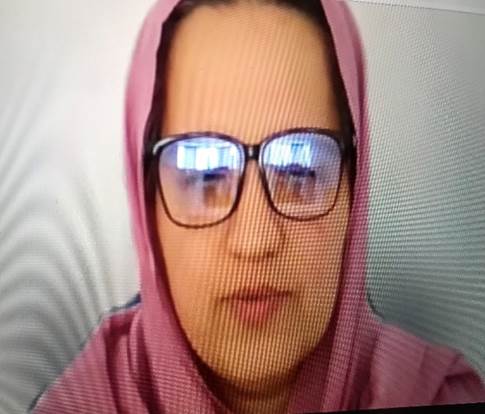
Jacob Kurtzer

Janti Soeripto

William Byrd

Najia Nasim
Afghanistan’s Humanitarian Dilemma Continues
By Elaine Pasquini

Washington: The Center for Strategic and International Studies (CSIS) held a March 1 webinar focused on the humanitarian implications of the Taliban’s December 24, 2022, edict restricting the rights of women and girls in Afghanistan.
Since Russia’s invasion of Ukraine and the earthquake in Turkey and Syria, news of Afghanistan is coming off the front-page, accompanied by a potential decline in financial support, noted moderator Jacob Kurtzer, senior associate at CSIS. “Afghanistan’s humanitarian crisis today has its roots in armed conflict and has been severely impacted by natural disasters but also has an economic crisis, one that has ties to the United States’ withdrawal and the economic implications of that,” he added.
Najia Nasim, executive director of Women for Afghan Women, explained that presently, like other NGOs working in the country, their staff has been reduced by half due to the Taliban’s ban on women working outside the home. Now, with only around 600 workers, the group struggles to respond to the urgent food insecurity and provide humanitarian assistance in the country. They were, however, able to obtain exemptions for running some children support centers after discussions with Taliban authorities, she said.
“Looking at the current situation for us as a women’s rights organization…we will continue to work for women and children in Afghanistan,” Nasim stated. “The more these restrictions continue this will have a severe impact on the economy…because half of the population is excluded so there is a dependency on international aid.”
After the ban was announced, Save the Children (SAVE) traveled to different provinces in order to negotiate for continued access to do their work safely without harassment, Janti Soeripto, president and CEO of the organization, said. “We’ve explained to Taliban leaders that we cannot do this work in the right way without women,” pointing out that the entire population of Afghanistan will suffer. “Unfortunately, we have very poor choices in front of us that our team has to make almost on a daily basis.”
Exemptions were given by the Ministry of Health and the Ministry of Education in the first two or three weeks after the ban, but it was still necessary to negotiate with local provincial Taliban leaders, she explained. There are different conversations with the Taliban – at the local and provincial level compared to in Kabul or Kandahar. “So far, we’ve been able to get back to work with most of our health work and with mostly community-based education for young primary school-aged children – girls and boys,” she said. “Overall, about half of our activities in Afghanistan have been re-started across many provinces, but not all. We’d like to see these exemptions be much more expanded and also be made very reliable.”
SAVE continues to press for cash transfer programing so that families can actually decide what they need. “It’s well-documented,” she said. “Cash assistance gives dignity, choice. It helps keep the local economy going.”
Half of the organization’s 5,000 staff members are women working as nurses, teachers, doctors, finance managers, human resource and logistics directors throughout 17 provinces in Afghanistan.
William Byrd of the United States Institute of Peace stressed the need to remember that humanitarian aid is going to diminish in the future, given Russia’s war on Ukraine and the earthquake disaster in Turkey and Syria.
This decline is predictable and aid groups should be prepared for it in order not to repeat the chaos that occurred in August 2021 when US-led troops left Afghanistan, he said. A disruption in aid would cause more deaths and potentially a refugee crisis for neighboring countries like Pakistan.
Exploring the use of the $3.5 billion of foreign exchange reserves – not to turn them over to the Taliban – but to support the private sector could help lighten the stress if aid declines in the future, Byrd noted. In addition, the World Bank has leftover funds from the Afghanistan Reconstruction Trust Fund which could be used to smooth the gradual decline of aid and avoid further damage to the extent possible, he added.
According to Byrd, large amounts of cash coming in from the UN are acceptable from the anti-money laundering and counter-terrorist financing point of view compared to the risks of engaging in financial transactions with the Taliban-controlled Afghan central bank. “I’m a big fan of cash delivery and potentially digital delivery,” he said. “There is a pilot program for digital delivery directly to Afghan women which may be worth pursuing. The World Bank could be helpful in coordinating and smoothing this process.”
Byrd related that the Taliban are collecting roughly $2 billion a year and are paying teachers’ salaries. “We say they [the Taliban] don’t govern, but they are collecting revenue better than the previous government,” he noted. “The intelligence agency is functioning quite well, so there are some aspects of governance that the Taliban are handling.”
To stave off any further deterioration in the lives of the 28 million Afghans in acute need of assistance, the humanitarian aid community, the big donors and UN agencies should focus on trying to minimize further damage to the economy, and “try as best possible to save lives and support the Afghan people,” he stated.
(Elaine Pasquini is a freelance journalist. Her reports appear in the Washington Report on Middle East Affairs and Nuze.Ink.)

